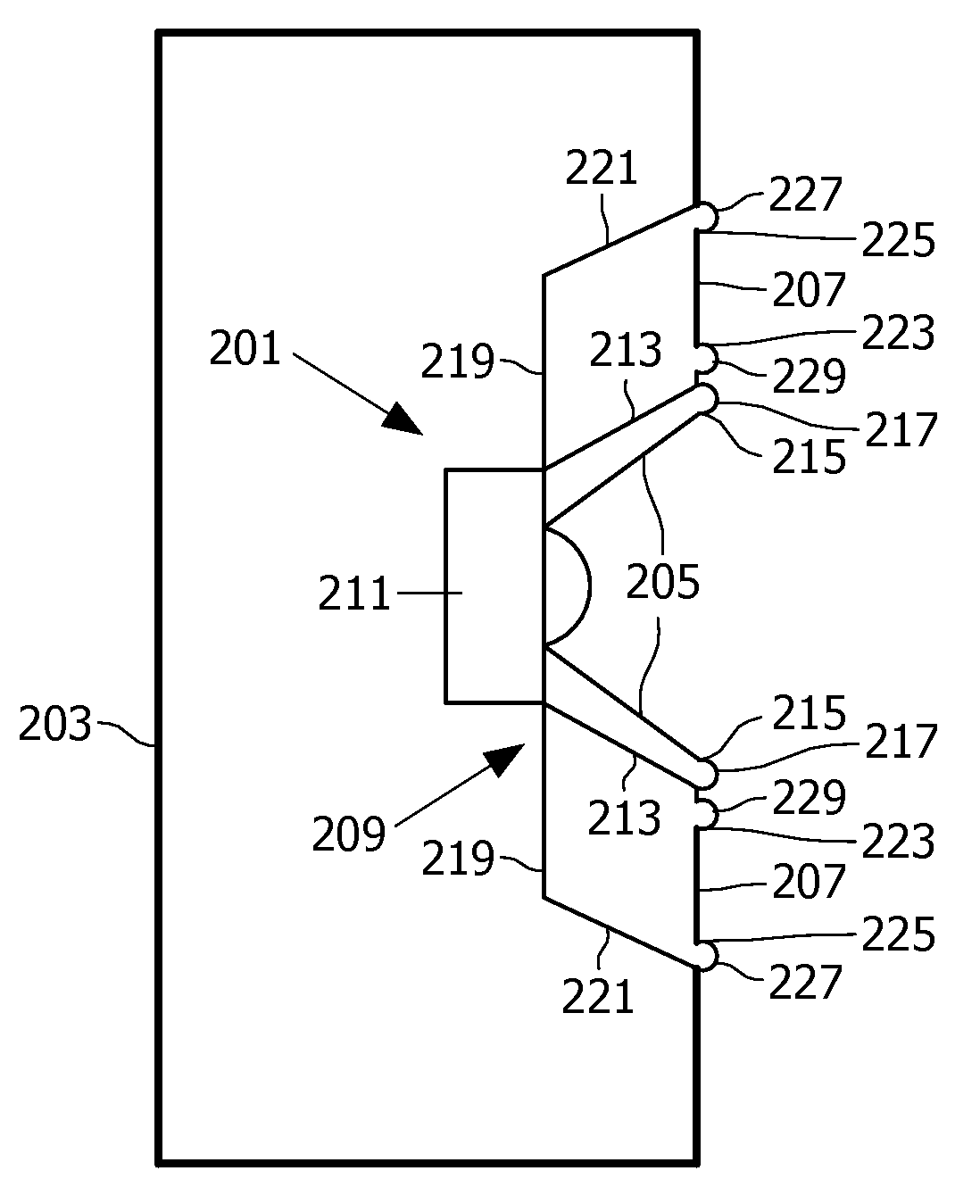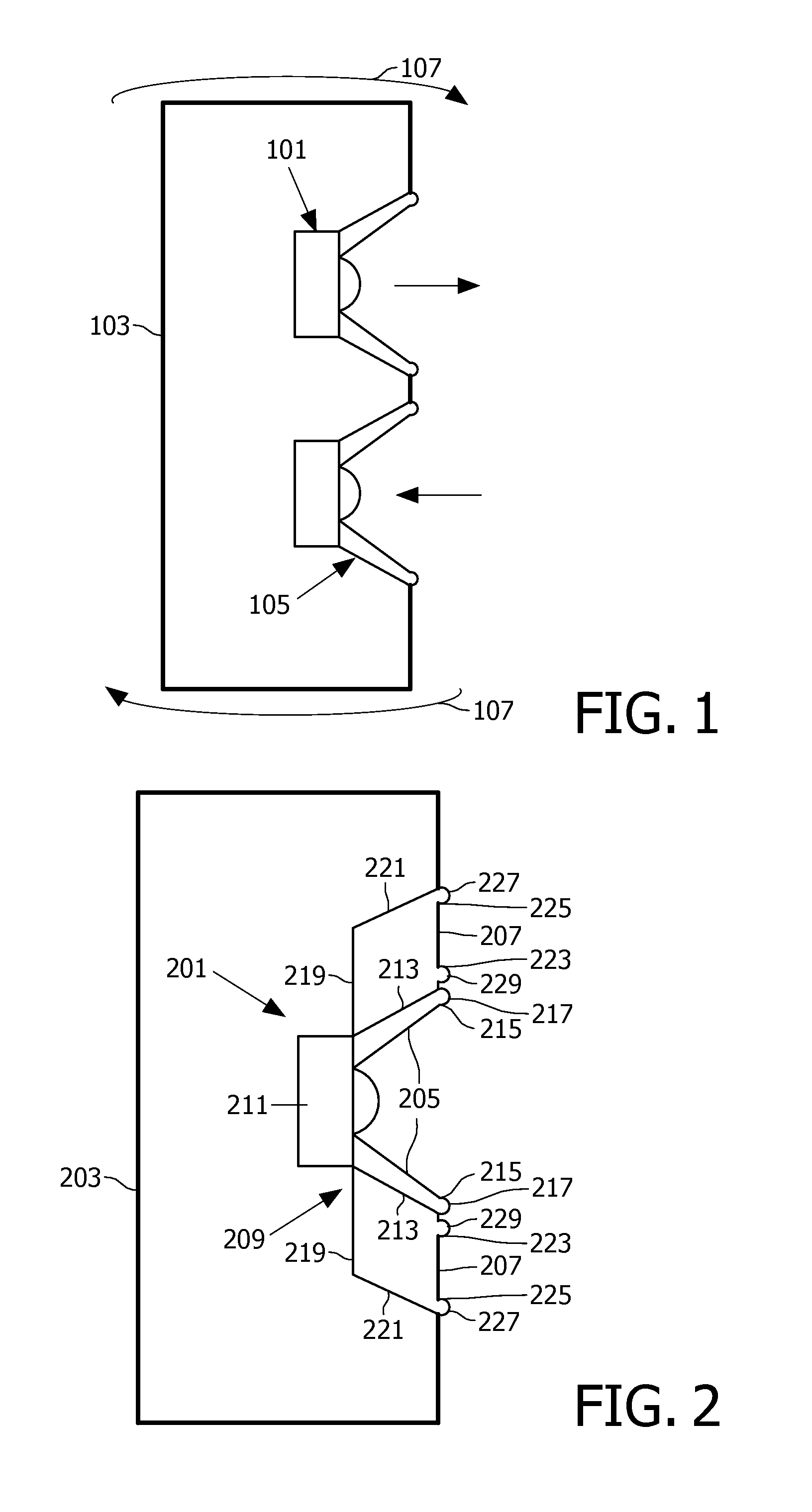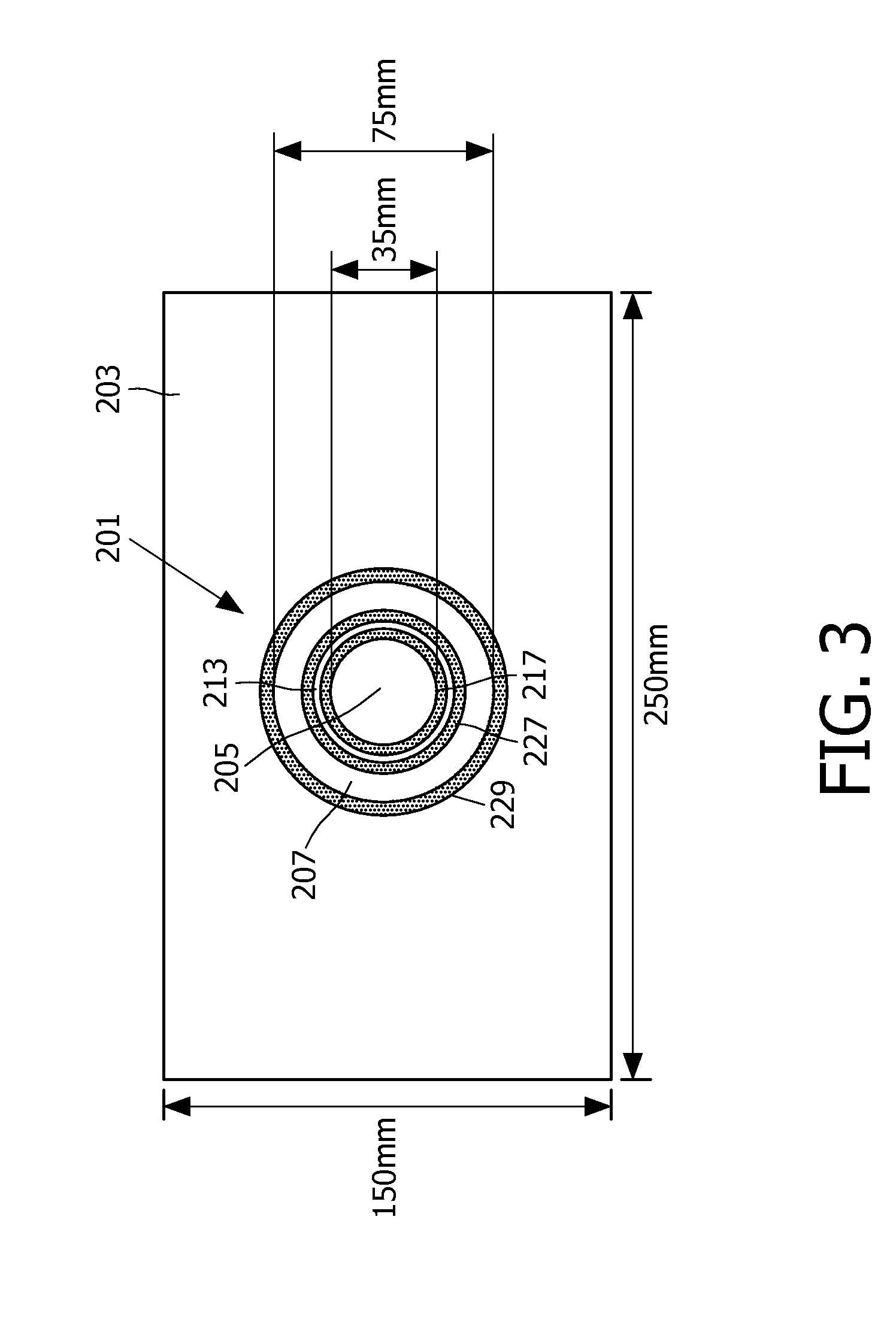Loudspeaker driver and loudspeaker arrangement
a loudspeaker and driver technology, applied in the direction of transducer details, transducer diaphragms, electrical transducers, etc., can solve the problems of increasing the cost of the loudspeaker enclosure, increasing the cost of the loudspeaker, and generating sound quality that is not ideal, so as to improve the sound quality, improve the loudspeaker driver, and improve the vibration performance
- Summary
- Abstract
- Description
- Claims
- Application Information
AI Technical Summary
Benefits of technology
Problems solved by technology
Method used
Image
Examples
Embodiment Construction
[0051]The following description focuses on embodiments of the invention applicable to a low frequency loudspeaker driver. However, it will be appreciated that the invention is not limited to this application but may be applied to many other loudspeaker drivers and arrangements.
[0052]In contrast to conventional systems wherein a passive radiator is mounted directly in the enclosure, the described loudspeaker arrangement uses a single loudspeaker driver that incorporates both an active radiator and a passive radiator. Thus, instead of mounting a separate and individual passive radiator, the described approach uses a single unit integrated loudspeaker driver with a single combined mounting. This provides improved sound quality as the single loudspeaker driver behaves more as a single sound source. Furthermore, the enclosure is exposed to only a single vibration source allowing reduced vibration stress and in particular reducing mechanical stress causes by the passive and active radiato...
PUM
 Login to View More
Login to View More Abstract
Description
Claims
Application Information
 Login to View More
Login to View More - R&D
- Intellectual Property
- Life Sciences
- Materials
- Tech Scout
- Unparalleled Data Quality
- Higher Quality Content
- 60% Fewer Hallucinations
Browse by: Latest US Patents, China's latest patents, Technical Efficacy Thesaurus, Application Domain, Technology Topic, Popular Technical Reports.
© 2025 PatSnap. All rights reserved.Legal|Privacy policy|Modern Slavery Act Transparency Statement|Sitemap|About US| Contact US: help@patsnap.com



